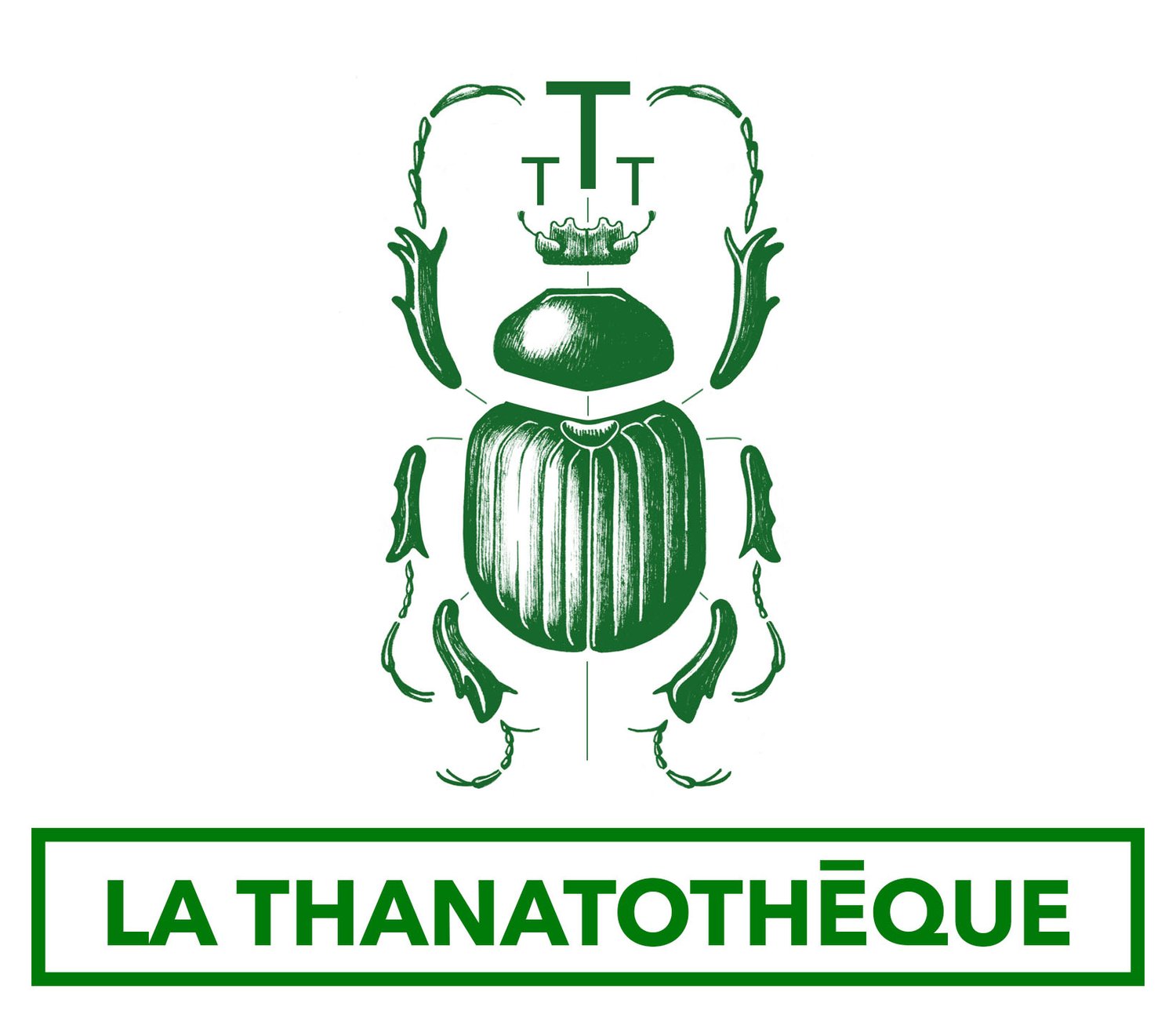Mais d’où vient ce nom barbare ? What about this name ?
English follows
Lors des différents salons auxquels nous participons, le public nous demande automatiquement l’origine de ce nom imprononçable. L’occasion donc de publier ce premier article sur ce tout nouveau blog.
Tout commence par une mère professeure de lettres classiques et un brainstorming dans le salon de mes parents, en 2021, lorsque je décidais de me lancer professionnellement dans le montage d’éclatés à la Beauchêne « pour voir si ça pouvait marcher ». Curieusement, c’est mon père qui trouve le nom — il faut dire que notre famille est bien conditionnée à l’étymologie.
Le nom est compliqué, mais il sonne bien, un peu mystérieux ; il fait surtout sens avec toute la démarche artistique sous-jacente.
Le mot thanatothèque vient des racines grecques thanatos, qui signifie la mort, et thêkê, désignant un coffre, un dépôt ou un lieu où l’on conserve des objets des collections. Littéralement, La Thanatothèque est donc un lieu où la mort elle-même est déposée, un espace dédié à la conservation de ce qui disparaît.
À travers ce mot, c’est tout un rapport à la finitude qui se dévoile : plutôt que fuir la mort, La Thanatothèque invite à la regarder, à la comprendre, à l’habiter avec respect. Les spécimens que nous dévoilons témoignent de l’incroyable beauté de la nature, et les conserver, c’est aussi préserver une part cette de vie constamment en danger.
At the various fairs we participate in, the public automatically asks us about the origin of this unpronounceable name. So, this is an opportunity to publish this first article on this brand-new blog.
It all started with a mother who is a professor of classical literature and a brainstorming session in my parents’ living room in 2021, when I decided to professionally launch myself into assembling exploded views at Beauchêne “to see if it could work.” Curiously, it was my father who came up with the name — our family is, after all, quite conditioned to etymology.
The name is complicated, but it sounds good, a little mysterious; above all, it makes sense with the entire underlying artistic approach.
The word thanatothèque comes from the Greek roots thanatos, meaning death, and thêkê, meaning a box, a repository, or a place where collections of objects are kept. Literally, the Thanatothèque is thus a place where death itself is deposited, a space dedicated to preserving what disappears.
Through this word, an entire relationship to finitude is revealed: rather than fleeing death, the Thanatothèque invites us to look at it, understand it, and inhabit it with respect. The specimens we reveal testify to the incredible beauty of nature, and preserving them is also about safeguarding a part of this life that is constantly under threat.
